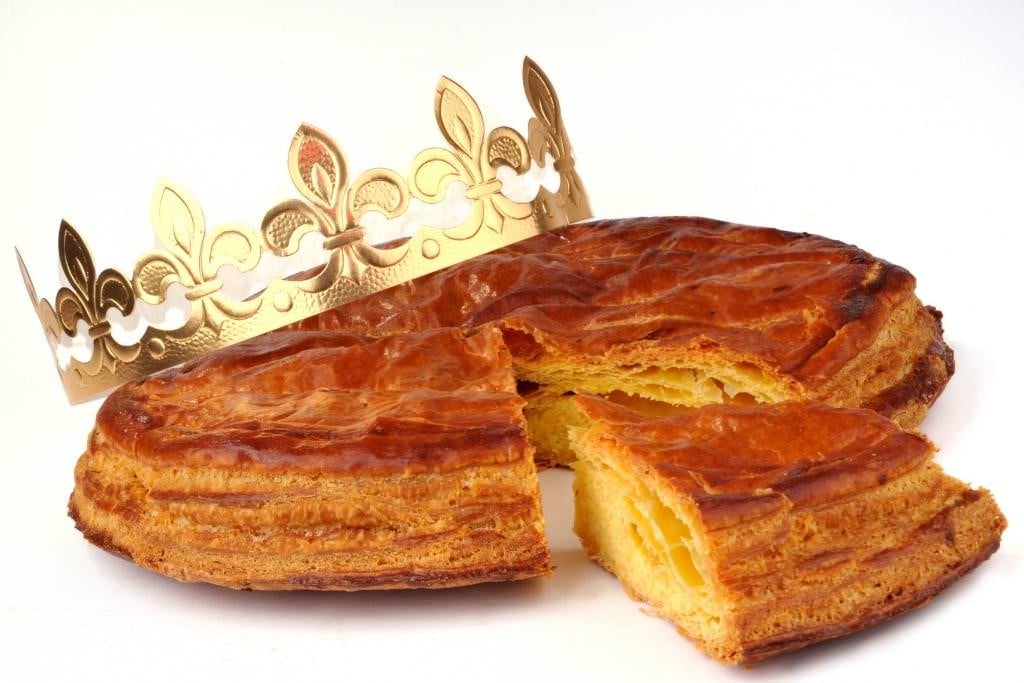New Year’s Traditions in France
Once the Christmas holidays wind down, you might wonder how the French celebrate the end of the year. Although there is no right or wrong way, the French do have certain traditions that set their celebrations apart. Just like around the world, the festivities in France, Happy New Year begins on 31st December and go on through the 1st of January but there are some rules!
The French know how to welcome the New Year in style, with a unique blend of traditions and festivities that add a certain je ne sais quoi to the celebration. Understanding and appreciating the differences took me a while, but I embrace them now!
Some posts on this site contain affiliate links, meaning if you book or buy something through one of these links, I may earn a small commission (at no extra cost to you!). Opinions are always my own and I’ll never promote something I don’t use or believe in. Also as an Amazon Associate I earn from qualifying purchases.
Whether you're planning to ring in the New Year in France (I have and it is a lot of fun!) or want to “Frenchify” your New Year's Eve at home, here are some French New Year's traditions to inspire your celebrations. Including the ever-important how to say Happy New Year in French.
Forget the same old party poppers and fromage-y resolutions! New Year’s Eve is a moment to bid adieu to the old and embrace the new. Infuse your celebration with the allure and sophistication à la française.
La Saint-Sylvestre
Like many Catholic countries, France also has specific days appointed to celebrate saints throughout the year. New Year’s Eve in France is also known as Le Réveillon de la Saint-Sylvestre (the awakening of the patron saint of the New Year).
It's all tied to the fact that December 31st aligns with the Western feast day dedicated to Saint Sylvester I, who held the papal reins from 314 to 335.
While France is predominantly a Catholic country, it also has an extensively wide range of cultural populations and not everyone celebrates Christmas. New Year’s is, therefore, an important and inclusive holiday observed by everyone.
So let's happy New Year French style!
Le Réveillon du Nouvel An
Just like Christmas Eve, the French New Year’s Eve also begins with an abundance of food. Le Réveillon du Nouvel An (literally meaning the awakening of the new year) is a lavish feast made up of delicious dishes and alcoholic beverages.
While there is no set menu for the meal, it usually consists of seafood (caviar, oysters, foie gras, smoked salmon), turkey, goose, and even game meats. The meal, as elaborate as Le Réveillon de Noël, kicks off with some caviar and champagne and can take hours and hours to finish.

Parties
While Christmas is a family affair, the celebrations of New Year’s Eve are reserved for friends. Some prefer to have intimate or mid-size home parties, while others love to head out and paint the town red.
There are no shortages of public spaces like bars and clubs hosting parties but you might have to book in advance and keep an eye out on the type of clothing allowed (remember some clubs have strict clothing restrictions like no flip flops, sportswear, or big logos).

If hosting/attending a house party, it is quite common to invite close friends and celebrate and drink the night away. Also known as une soirée dansante (literally meaning an evening filled with dancing and merriment), these parties are a more popular way to welcome the new year. Costume parties (des soirées déguisées) are also quite popular during this time.
The Presidential Message
A tradition started by Général Charles de Gaulle in 1960 during the height of the Cold War, the presidential message is an integral part of France’s New Year’s Eve traditions. Every year, at 8 pm, the French president addresses the nation on television with presidential greetings.
Broadcasted from the Élysée Palace, Les vœux présidentiels (the President’s vows) highlight the events of the past year and the President shares his political vision for France’s future.

Midnight Celebrations and Fireworks
There is no formal countdown to mark the end of the year on television, but there is a big firework display on Avenue Champs Élysées, the epicenter of New Year’s Eve celebrations in Paris.
Beginning 30 mins before midnight, the elaborate light and sound show depicts the different facades of the French Republic on the Arc de Triomphe. Mere seconds before midnight, a countdown begins to welcome the New Year, and as the clock strikes 12, the sky and the backdrop are lit with glittering fireworks.

French Customs at New Year's
When and How to Say Happy New Year in French
You would think it would be straightforward when it comes to how to say Happy New Year in France.
Mais non.
The French language and heck French people in general are a bit complicated. I am looking at you Mr. Misadventures…
In France, it is bad luck to wish ‘Happy New Year’ before the 1st of January. As such, the French send out greetings that include words like ‘Bonnes fêtes de fin d’année’, meaning happy end-of-the-year celebrations.
After midnight when the new year begins, one can hear shouts of ‘Bonne Année’ (Happy New Year in French) or ‘Meilleurs Voeux’ (best wishes).

Kissing Under the Mistletoe
Unlike other Anglo-Saxon countries, kissing under the mistletoe (‘S’embrasser Sous le Gui’) is an important and popular French tradition reserved for New Year’s Eve. Traditionally brought by the Druid Celts, kissing under the mistletoe is supposed to be a good luck charm for the new year, and if you’re in love with the person, it was believed to bring a wedding before the end of the year.

Apart from kissing under the mistletoe, there is a tradition to give air/cheek kisses as the clock strikes 12. Depending on the region, it is normal to expect anywhere between 2-4 air kisses. It is necessary to do the ‘Faire la bise’ with everyone in the room (literally, everyone). The only exception is when you’re out on the streets or in a bar amongst strangers.
Exchanging Small Gifts
The French follow the traditional exchange of gifts during Christmas, just like the US and the UK, but they also have a custom of giving small gifts on the first day of the new year called étrennes (meaning a mystery gift or a surprise). The tradition dates back to the Roman period when gifts such as honey, sweets, or figs were exchanged to wish for a pleasant rest of the year.

Popularly known as the Jour des Étrennes, it is when envelopes of money are exchanged as a sign of gratitude. These envelopes contain a certain amount of money (there’s no specific amount) to people who have been helpful throughout the year like postmen, garbage collectors, or concierges, and also include the bonuses given to employees.
New Year's Resolutions and Celebrations: A Time for Togetherness
While New Year's resolutions are a global phenomenon, the French keep them close to the heart, shared only with the dearest of friends and family. This New Year, consider ditching the public pronouncements and instead, confide your aspirations in intimate whispers around a crackling fire.
Le Jour de l’An
On New Year’s Day, it is quite common to share resolutions and greeting cards with friends and family. While families around the globe are used to sending out Christmas cards, the concept hasn’t caught on in France.
Very few families send out cards in December whereas the majority of the French prefer to send out New Year’s greeting cards, known as ‘Les cartes de voeux du nouvel an’, on the 1st of January or throughout the first month of the year.

The cards were originally handwritten with personalized messages but nowadays, the internet has brought about the concept of virtual cards, not handwritten but still personalized.
After the midnight celebrations of Champs Élysées, the avenue remains a hotspot of a musical parade. Not quite big enough to compete with the Macy’s Thanksgiving Day parade, the one in Paris is still full of lively drumming and flag-throwing.
Thousands of viewers line up along the avenue to watch the parade while some choose to stay away from the cold and curl up in front of the television.
Celebrations through January 6
But wait, just because it’s the 1st of January doesn’t mean it’s the end of celebrations! In France, the festivities and the holiday spirit extend well into the first week of January until the 6th. Celebrating the religious day when the three Magi presented baby Jesus with gifts, the day of Épiphane (Epiphany) and La Fête des Rois marks the end of the holiday period.

Across France, families, schools, and offices dig into the cake of the kings, popularly known as the La Galette des Rois- puffed, flaky pastry filled with frangipane (or chocolate or apples) and hiding a small figurine within it. The tradition says that whoever finds the figurine (also called a fèvre) is the king or the queen for the day and is awarded with a crown.
Bonnes fêtes de fin d’année !
How about you? Have you celebrated New Year's in Paris or another part of France? Are there any French New Year's traditions that you would like to make your own? Do share!
Like it? PIN it!
 |  |  |


I love reading what other countries do for the holidays. What fun!!
My family has so many different new years traditions just being from different states, I can imagine how widely different they are in different countries as well!
I dont have any traditions on this night. It is cool to learn about the fun in France
Fun! It’s on my bucket list to be in France during the holidays!
I love to discover other countries’ celebrations of Christmas. I think France is the most interesting so far.
It’s interesting to know more about Christmas in France. I think every country starts with food. Here in Japan, we eat Christmas cake and KFC chicken in Christmas
WOW sounds like so much fun and lots to see and do in France during the Holiday Season!
New Year’s traditions in France are really similar to the traditions we have here in Spain. The kissing under the mistletoe is not common here, though.
It is fun to learn how different countries ring in the new year. These are neat to know about!
It was interesting to read about these French traditions. I never would have guessed that wishing Happy New Year before Jan 1 was supposed to be bad luck.
Wow! That look so much fun and an exciting experience! I think I would love to experience celebrating Christmas on France!
Lots of food, family and fireworks to close out the year and bring in the New Year. I’d be honored if I was able to celebrate in France, maybe one day.
Traveling to France has been on my bucket list for a while. Reading this article helps me decide what time of year would be best to go!